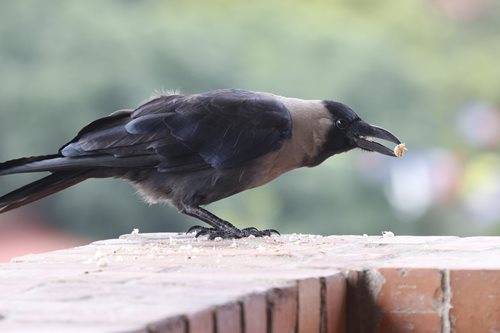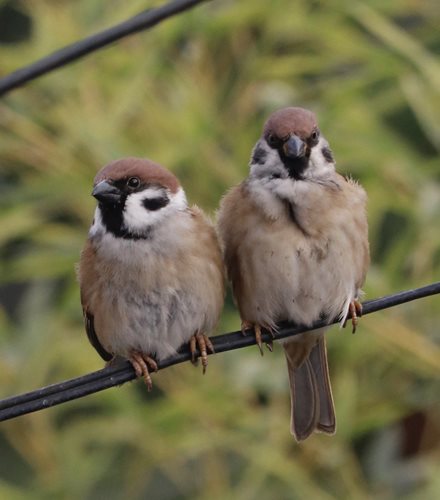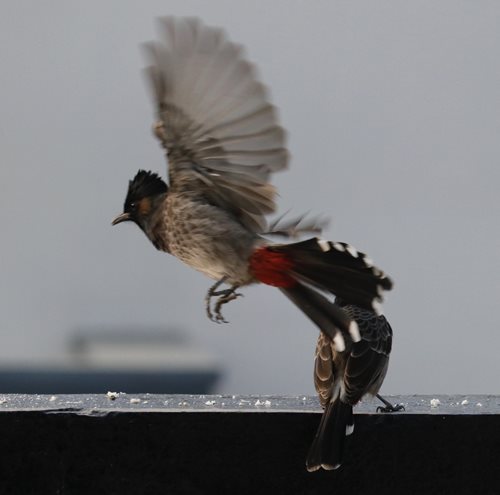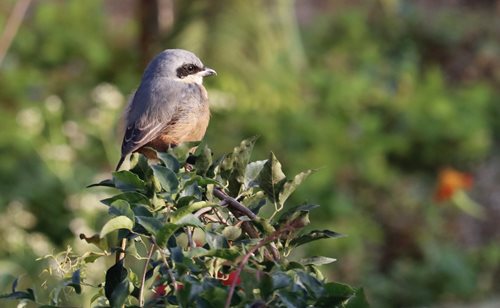On first arrival in Kathmandu the impression is of rubbish, polluted air and a miasma of dust from broken roads and reconstruction (following the earthquakes nearly three years ago). Yet a lot of wildlife lives in the Valley along with the burgeoning human population.
Those of you who know me are familiar with my passion for creatures large and small and I’ve been observing the birds that visit our flat in Patan.
The most obvious are the House Crows – a noisy greedy lot who were the first to catch on to the fact I put out food scraps on our second-floor terrace. Now they are there on our ‘bird table’ so quickly that often they’ve grabbed a mouthful and flown off even before I’ve walked back into the kitchen. One individual, distinguishable by an errant feather sticking out of her left wing, likes dunking her food – softening it in the water I also put out for the birds. None of the other local crows dunk.
Some weeks after the crows clocked the new food source, ‘London’ pigeons arrived, and surprisingly they usually scare off the larger crows, even if they often lose out to sparrows (we have both house and tree sparrows here) while they are distracted by thoughts of sex. Pigeons (aka Rock Doves) are such a randy lot!
That reminds me that the word for prostitute in Nepali – and I think Hindi – is
randi. Surely that must have come into British English slang via the Army or other British expats last millennium.
My favourite avian visitors by far though are the bulbuls. Their call makes me think they are saying
look at me look at me as they regard the world from the top of a convenient tree or electricity post. We seem to have eight bulbuls locally who – until this morning – always seemed to fly around in groups of four, but this morning all eight were perched on a huge stately monkey puzzle tree, looking like decorations on a Christmas tree. Then as I watched, something told them all to take to the air simultaneously then land back on the same tree, in different positions – a change of pecking order, perhaps.
The local species of bulbul is the red-vented, named because their nether regions – in both sexes – are decorated with striking scarlet feathers. Like all bulbuls, they also have erectile crest feathers. I’m still trying to decipher what crest down or crest up means. Certainly the first of the eight to arrive at our ‘bird table’ is often crest-down until it has decided it is safe to eat.
 |
| House Crow, Corvus splendens |
 |
| Male Tree Sparrows, Passer montanus |
 |
| Red-vented bulbuls, Pyncnonotus cafer, with crests up |
 |
| Shrikes are about and shout their presence but don't deign to come close |